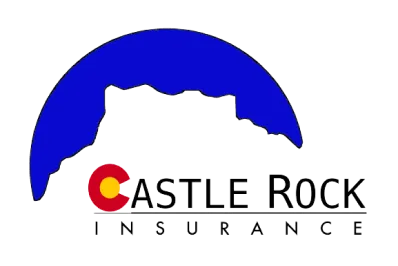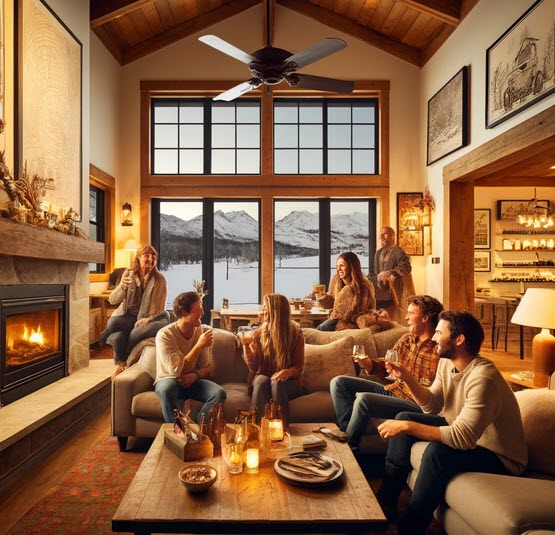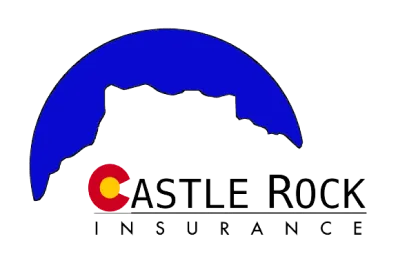Home insurance costs in Colorado have seen a significant increase, rising by over 50% in the last three years. This spike in premiums can be attributed to a combination of factors, including escalating wildfire risk, market conditions, and inflation. Colorado is ranked third worst in the nation for insurance profitability, which further contributes to the high cost of coverage.
Why has home insurance become so expensive in Colorado?
Home insurance in Colorado has become increasingly expensive due to a variety of factors. One of the main reasons is the heightened risk of wildfires in the state. Colorado has experienced frequent and devastating wildfires, leading to significant property losses and insurance claims. The insurance companies need to factor in the potential for losses when determining rates, which results in higher premiums for homeowners.
Another factor contributing to the high cost of home insurance in Colorado is the state’s susceptibility to hailstorms. Colorado is known as “Hail Alley” due to its frequent and severe hailstorms, particularly in the Front Range region. These hailstorms can cause substantial damage to homes, resulting in increased insurance claims and higher premiums.
Moreover, rising construction costs also play a role in increasing home insurance rates in Colorado. The cost of labor and materials has been steadily increasing, making it more expensive to rebuild or repair homes in the event of a covered loss. Insurance companies take into account these higher construction costs when determining premiums, resulting in elevated insurance rates for homeowners.
What are the factors that contribute to high home insurance rates in Colorado?
Several factors contribute to the high home insurance rates in Colorado. One major factor is the increased risk of wildfires in the state. Colorado has experienced frequent and devastating wildfires in recent years, leading to significant property losses and insurance claims. Additionally, the state is known as “Hail Alley” due to its susceptibility to hailstorms, which also contribute to property damage and insurance claims.
Another factor is the limited competition among insurance providers in Colorado. The state’s high-risk environment, particularly for wildfires and hailstorms, makes it less attractive for insurance companies to enter the market. This lack of competition leads to higher prices for insurance coverage.
Furthermore, the overall cost of living in Colorado is higher compared to many other states. Higher property values, increased construction costs, and a more expensive labor market all contribute to the elevated cost of home insurance in the state. These factors are taken into consideration by insurance companies when determining rates, resulting in higher premiums for homeowners.
Are there specific areas in Colorado that are considered high-risk for home insurance?
Yes, there are specific areas in Colorado that are considered high-risk for home insurance. Densely populated areas near high-risk wildfire zones are more likely to experience large losses. Additionally, areas prone to hailstorms, such as the Front Range region, are also considered high-risk for home insurance due to the potential for hail damage.
For example, the city of Colorado Springs is located near the Pike National Forest, which has a high risk of wildfires. Homeowners in this area may face higher insurance rates due to the increased likelihood of property damage caused by wildfires. Similarly, cities like Denver and Aurora in the Front Range region are prone to severe hailstorms, leading to higher insurance premiums for homeowners in these areas.
Moreover, areas that are susceptible to other natural disasters, such as flooding or landslides, may also be considered high-risk for home insurance. These events can cause significant damage to properties, leading to higher insurance rates in those areas.
How does home insurance coverage in Colorado compare to other states?
Home insurance coverage in Colorado can be more expensive compared to other states due to the heightened risks of wildfires and hailstorms. These natural disasters increase the likelihood of property damage and insurance claims, leading to higher premiums for homeowners in the state.
However, it is important to note that insurance rates can vary significantly between states based on multiple factors, including regional climate, population density, and the level of competition among insurance providers. For example, homeowners in states with lower wildfire and hailstorm risks, such as Vermont or Maine, may pay significantly lower premiums for their home insurance coverage compared to homeowners in Colorado. The difference in risk exposure directly affects the cost of coverage.
Additionally, each state has its regulations and requirements regarding home insurance coverage, which can influence the cost of premiums. Factors such as state-specific building codes, litigation rates, and available discounts can also impact the price of insurance coverage in different states.
Why is there limited competition among insurance providers in Colorado?
Limited competition among insurance providers in Colorado can be attributed to several factors. The state’s high-risk environment, particularly for wildfires and hailstorms, makes it less attractive for insurance companies to enter the market. The increased frequency and severity of natural disasters have led insurance companies to reassess their risk exposure in the state, resulting in limited options for homeowners.
Additionally, the regulatory environment in Colorado may also contribute to the limited competition. The state’s insurance regulations and requirements may pose challenges for insurance companies, discouraging them from entering the market. As a result, homeowners have fewer choices when it comes to selecting insurance providers, leading to higher prices.
Moreover, the complex nature of assessing risk and setting appropriate premiums in a state prone to natural disasters can also deter insurance companies from entering the market. The potential for substantial losses due to wildfires or hailstorms requires insurance providers to have a thorough understanding of the local risks and the financial capacity to cover potential claims.
.
What is the impact of frequent wildfires and hailstorms on home insurance rates in Colorado?
Frequent wildfires and hailstorms have a significant impact on home insurance rates in Colorado. The increased risk of property damage and insurance claims due to these natural disasters leads to higher premiums for homeowners. Insurance companies factor in the potential for losses when determining rates, and the elevated risk in Colorado directly affects the cost of coverage.
For example, if a homeowner lives in an area prone to wildfires, such as the foothills west of Denver, their insurance premiums will likely be higher compared to someone living in a less fire-prone area. Similarly, homeowners in regions that experience frequent and severe hailstorms, like the Front Range, can expect to pay more for their home insurance due to the increased risk of property damage.
The impact of frequent wildfires and hailstorms goes beyond the direct damage to individual properties. Insurance companies also consider the potential for widespread losses and the need to cover the costs of rebuilding or repairing multiple homes in affected areas. This collective risk further contributes to the higher insurance rates in Colorado.
What is the impact of frequent wildfires and hailstorms on home insurance rates in Colorado?
Frequent wildfires and hailstorms have a significant impact on home insurance rates in Colorado. The increased risk of property damage and insurance claims due to these natural disasters leads to higher premiums for homeowners. Insurance companies factor in the potential for losses when determining rates, and the elevated risk in Colorado directly affects the cost of coverage.
For example, if a homeowner lives in an area prone to wildfires, such as the foothills west of Denver, their insurance premiums will likely be higher compared to someone living in a less fire-prone area. Similarly, homeowners in regions that experience frequent and severe hailstorms, like the Front Range, can expect to pay more for their home insurance due to the increased risk of property damage.
The impact of frequent wildfires and hailstorms goes beyond the direct damage to individual properties. Insurance companies also consider the potential for widespread losses and the need to cover the costs of rebuilding or repairing multiple homes in affected areas. This collective risk further contributes to the higher insurance rates in Colorado.
What is the impact of frequent wildfires and hailstorms on home insurance rates in Colorado?
Increased construction costs in Colorado can impact home insurance rates. As the cost of labor and materials rises, it becomes more expensive to rebuild or repair homes in the event of a covered loss. Insurance companies take into account these increased construction costs when determining premiums, as they need to ensure they can adequately cover the potential expenses associated with rebuilding or repairing a home.
For example, if the cost of labor and materials increases due to economic factors or supply chain disruptions, insurance companies will adjust their premiums to account for these higher costs. Homeowners may then experience an increase in their insurance rates to reflect the increased construction costs in the state.
Moreover, the increasing demand for construction services in Colorado can also contribute to higher construction costs. As the population grows and more people move to the state, the demand for new homes and renovations increases. This high demand can lead to a shortage of skilled labor and drive up the cost of construction, further impacting home insurance rates.
Why are property values in certain areas of Colorado higher, and how does it affect home insurance costs?
Property values in certain areas of Colorado can be higher due to various factors such as desirable locations, proximity to amenities, and scenic views. Higher property values directly impact home insurance costs as insurance coverage is typically based on the replacement cost of the property. In areas with higher property values, the cost to rebuild or repair a home is greater, leading to higher insurance premiums.
For instance, properties located in upscale neighborhoods or mountain communities with breathtaking views tend to have higher values. As a result, the cost to rebuild or repair these homes in the event of a covered loss would be more expensive, leading to higher insurance premiums to adequately cover the potential expenses.
Moreover, areas with higher property values often attract homeowners who are willing to invest in additional amenities and features for their homes. These additional features, such as swimming pools, extensive landscaping, or high-end finishes, can increase the cost of insurance coverage. Insurance companies consider these added features when determining premiums, as they may require higher coverage limits and increase the potential liability for claims.
How do increased construction costs in Colorado impact home insurance rates?
Home insurance brokers in Colorado play a crucial role in helping homeowners navigate the complex insurance market. They have in-depth knowledge of the insurance industry and can assist homeowners in finding the best coverage options at competitive rates. Brokers can also guide understanding of policy terms and conditions, ensuring homeowners have the appropriate coverage for their specific needs.
Working with a home insurance broker can save homeowners time and effort in researching and comparing different insurance options. Brokers have access to multiple insurance companies and can provide homeowners with a range of coverage options tailored to their specific needs and budget. They can also explain the intricacies of insurance policies, helping homeowners make informed decisions about their coverage.
For example, a homeowner in Colorado Springs who is looking for home insurance coverage can consult a broker who specializes in the area. The broker can assess the homeowner’s needs and provide them with several options from different insurance providers. The broker can explain the differences in coverage, deductibles, and premiums, helping the homeowner make an informed decision
How can homeowners mitigate the high cost of home insurance in Colorado?
While homeowners cannot control all the factors that contribute to the high cost of home insurance in Colorado, there are steps they can take to mitigate the expenses. One effective way is to invest in mitigation efforts, such as fireproofing homes and communities, to reduce the risk of property damage and lower insurance rates. Additionally, installing hail-resistant roofs and property can help mitigate the impact of hailstorms, potentially reducing the frequency and severity of insurance claims.
For example, homeowners can install fire-resistant materials, such as Class A roofing, and create defensible spaces around their homes by removing flammable vegetation. These measures can reduce the risk of property damage in the event of a wildfire and may lead to lower insurance premiums. Similarly, installing impact-resistant roofing materials can help minimize hail damage and potentially lower insurance rates.
Furthermore, homeowners can also explore discounts and credits offered by insurance companies. Many insurers provide discounts for safety features such as smoke detectors, security systems, and fire extinguishers. Taking steps to improve home security and reduce the risk of accidents can help homeowners qualify for these discounts, resulting in lower insurance premiums.
In conclusion, the high cost of home insurance in Colorado can be attributed to several factors, including the increased risk of wildfires and hailstorms, limited competition among insurance providers, higher property values, increased construction costs, and inflation. Homeowners can work with insurance brokers and implement mitigation strategies to help manage the cost of coverage in the state. By understanding the factors that contribute to high insurance rates and taking proactive measures, homeowners can better navigate the complex insurance market and potentially reduce their insurance expenses in Colorado.














